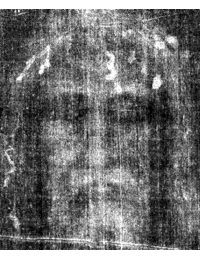
Scientists in Italy studying the famed Shroud of Turin, which many Christians believe is the burial cloth of a resurrected Jesus Christ, have determined that the relic could not be a medieval fake, as has been argued by some experts who have studied the shroud in the past.
As reported by the Vatican Insider, a website following Catholic Church news, the report by scientists from Italy’s National Agency for New Technologies, Energy and Sustainable Development says that the “double image (front and back) of a scourged and crucified man, barely visible on the linen cloth of the Shroud of Turin, has many physical and chemical characteristics that are so particular that the staining which is identical in all its facets, would be impossible to obtain today in a laboratory.” The researchers determined that the “inability to repeat (and therefore falsify) the image on the Shroud makes it impossible to formulate a reliable hypothesis on how the impression was made.”
According to ABC News, the researchers “conducted dozens of hours of tests with X-rays and ultraviolet lights,” concluding that “no laser existed to date that could replicate the singular nature of markings on the shroud. They also said that the kind of markings on the cloth could not have come from direct contact of the body with the linen.”
Most informed skeptics of the shroud’s authenticity speculate that it was created between the years 1260 and 1390, well over a thousand years after Christ’s death and ressurection. While intensive radiocarbon testings of some of the shroud’s material, conducted in 1988, seemed to confirm that theory, those defending the cloth’s authenticity claim that the fibers tested had actually been used during the Middle Ages to to repair the shroud, which had been damaged by fire.
But according to England’s Daily Mail newspaper, further doubt was cast on the shroud’s authenticity after Israeli archaeologists “uncovered the first known burial shroud in Jerusalem from the time of the Crucifixion. Its weave and design are completely different from the Turin Shroud, they said. The Jerusalem shroud has a simple two-way weave — but the twill weave used on the Turin Shroud was introduced more than 1,000 years after Christ lived.”
The researchers in the latest project set out to “identify the physical and chemical processes capable of generating a color similar to that of the image on the Shroud,” their report stated. According to England’s Telegraph newspaper, the researchers “concluded that the exact shade, texture and depth of the imprints on the cloth could only be produced with the aid of ultraviolet lasers — technology that was clearly not available in medieval times.”
Their report speculates that the image of the bearded man on the cloth was probably created by “some form of electromagnetic energy (such as a flash of light at short wavelength).” Reported the Telegraph: “Although they stopped short of offering a non-scientific explanation for the phenomenon, their findings will be embraced by those who believe that the marks on the shroud were miraculously created at the moment of Christ’s Resurrection.”
Dr. Paolo Di Lazzaro, who headed up the research team, observed of their findings: “When one talks about a flash of light being able to color a piece of linen in the same way as the shroud, discussion inevitably touches on things like miracles and resurrection.” But he explained that “as scientists, we were concerned only with verifiable scientific processes. We hope our results can open up a philosophical and theological debate, but we will leave the conclusions to the experts, and ultimately to the conscience of individuals.”
While naysayers appeared unmoved by the latest findings, the research seems to back up the findings of a team of Americans scientists, called the Shroud of Turin Research Project, who studied the shroud between 1978 and 1981, concluding that while the markings on the cloth had not been made by paint or dye and were not the “product of an artist,” they also could not be explained scientifically.
That team — which included nuclear physicists, chemists, biophysicists, and forensic pathologists — concluded that the “image is an ongoing mystery,” noting: “There are no chemical or physical methods known which can account for the totality of the image, nor can any combination of physical, chemical, biological or medical circumstances explain the image adequately.”
The Shroud of Turin, which is owned by the Vatican, is kept in a temperature-controlled environment at the Cathedral of Saint John the Baptist in Turin, Italy, where it is visited by millions of people each year. The Catholic Church has never taken an official position on the authenticity of the relic. Nevertheless, noted the Telegraph, “Pope Benedict XVI has said that the enigmatic image imprinted on the cloth ‘reminds us always’ of Christ’s suffering.”



